Explanation: What it would look like to leave planet Earth? Such an event was recorded visually in great detail by the MESSENGER spacecraft as it swung back past the Earth, eight years ago, on its way in toward the planet Mercury. Earth can be seen rotating in this time-lapse video, as it recedes into the distance. The sunlit half of Earth is so bright that background stars are not visible. The robotic MESSENGER spacecraft is now in orbit around Mercuryand has recently concluded the first complete map of the surface. On occasion, MESSENGER has continued to peer back at its home world. MESSENGER is one of the few things created on the Earth that has left and will never return -- at the end of its mission MESSENGER will be crashed into Mercury's surface.
Nombre total de pages vues
25/08/2019
Science & Technology - Astronomy picture of the day : Leaving Earth
24/08/2019
Science & Technologie - Aeronautique - Avions du futur : Un Airbus aux longues ailes
Sur ce concept d'avion étudié par Airbus pour 2030 à 2050, les ailes sont plus longues et plus fines, pour une meilleure efficacité, le fuselage n'est pas tubulaire mais élargi, pour un volumeintérieur plus grand, les réacteurs sont installés contre le fuselage et non sous les ailes. Selon Airbus, la fiabilité des moteurs futurs sera meilleure et réduira le besoin d'une grande accessibilité. Cette disposition réduit le bruit et autorise des voilures différentes. Ici, l'empennage est en U, sans queue centrale. © Airbus
Science & Technology - Axtronomy picture of the day : Millions of Stars in Omega Centauri
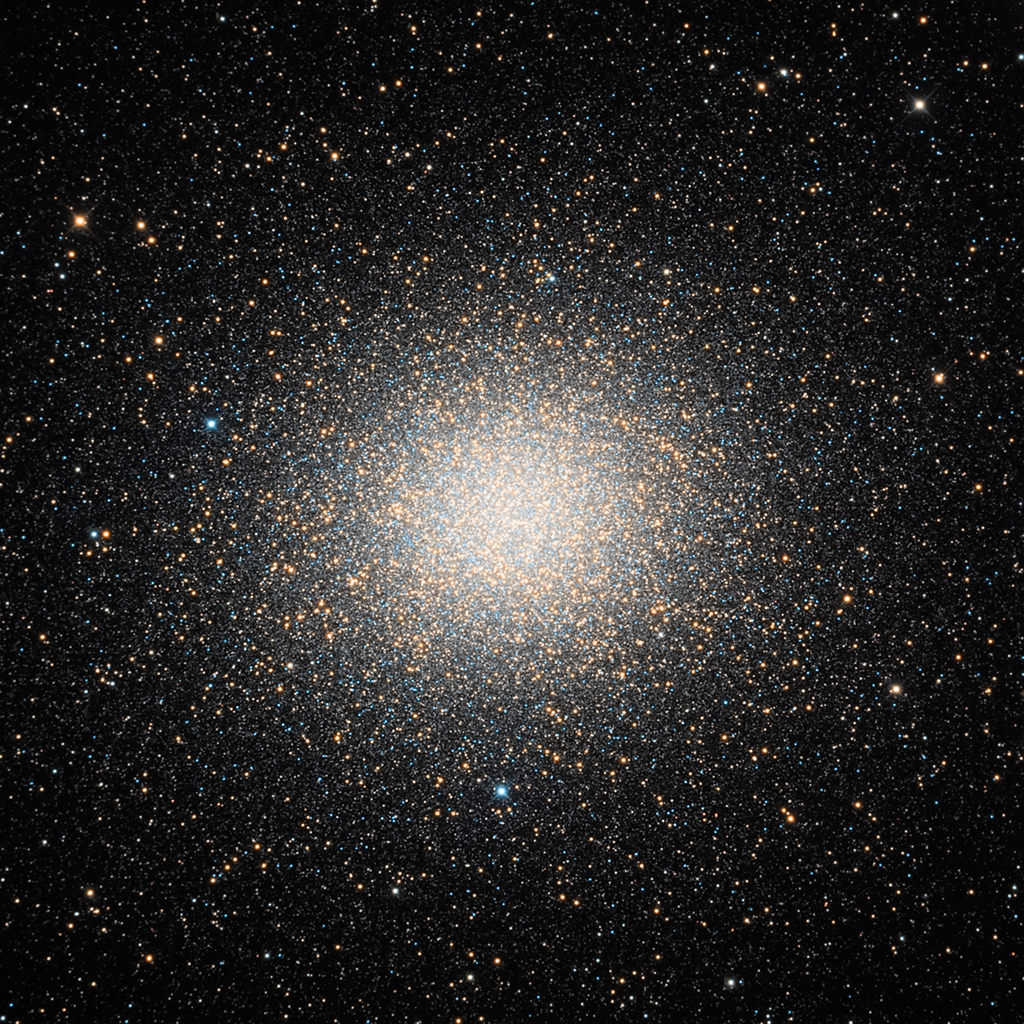
Image Credit & Copyright: Michael Miller, Jimmy Walker
Explanation: Globular star cluster Omega Centauri, also known as NGC 5139, is some 15,000 light-years away. The cluster is packed with about 10 million stars much older than the Sun within a volume about 150 light-years in diameter. It's the largest and brightest of 200 or so known globular clusters that roam the halo of our Milky Way galaxy. Though most star clusters consist of stars with the same age and composition, the enigmatic Omega Cen exhibits the presence of different stellar populations with a spread of ages and chemical abundances. In fact, Omega Cen may be the remnant core of a small galaxy merging with the Milky Way.
23/08/2019
Science & Technology - Astronomy picture of the day : NGC 1499: The California Nebula
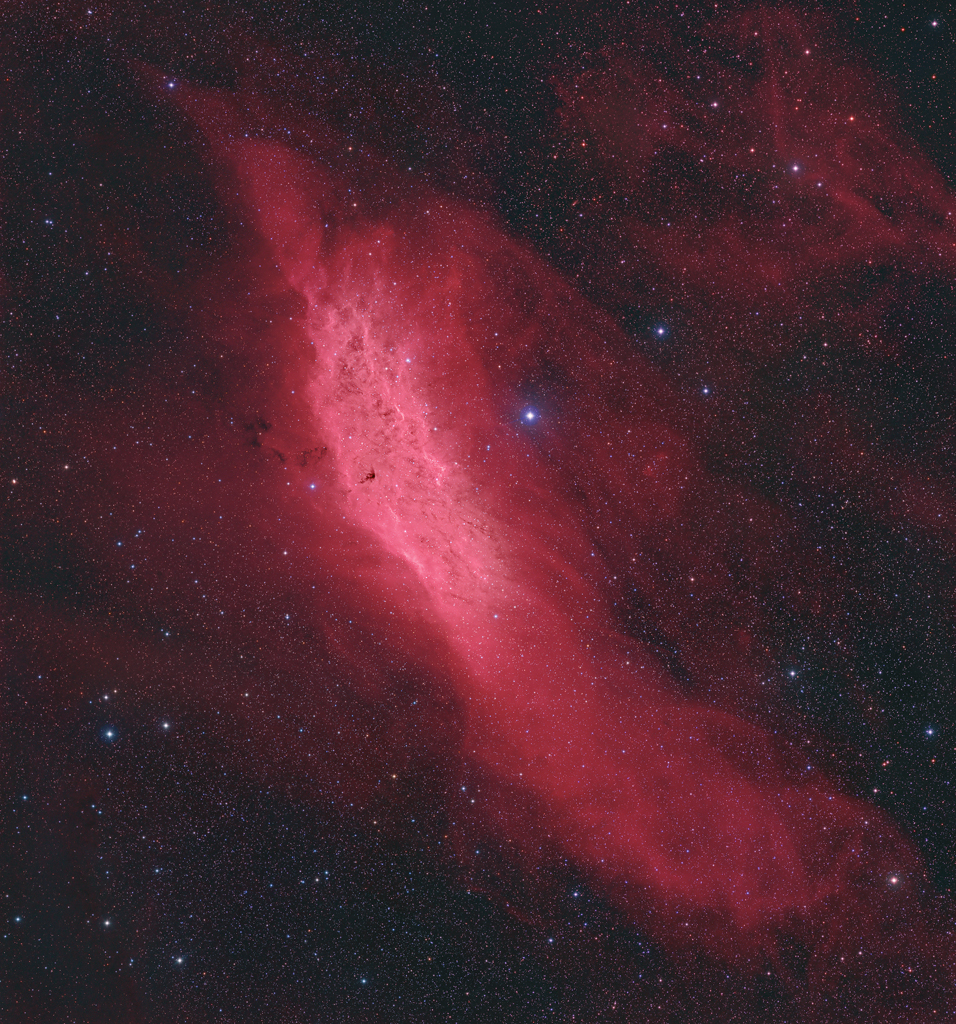
Image Credit & Copyright: Sara Wager
Explanation: Drifting through the Orion Arm of the spiral Milky Way Galaxy, this cosmic cloud by chance echoes the outline of California on the west coast of the United States. Our own Sun also lies within the Milky Way's Orion Arm, only about 1,500 light-years from the California Nebula. Also known as NGC 1499, the classic emission nebula is around 100 light-years long. The California Nebula shines with the telltale reddish glow characteristic of hydrogen atoms recombining with long lost electrons. The electrons have been stripped away, ionized by energetic starlight. Most likely providing the energetic starlight that ionizes much of the nebular gas is the bright, hot, bluish star Xi Persei just to the right of the nebula. A popular target for astrophotographers, this deep California Nebula image is a 6 panel telecopic mosaic and covers a wide field of view. The nebula lies toward the constellation Perseus, not far from thePleiades.
22/08/2019
Science & Techology - Astronomie picture of the day : Nearby Spiral Galaxy NGC 4945
Image Credit & Copyright: Martin Pugh
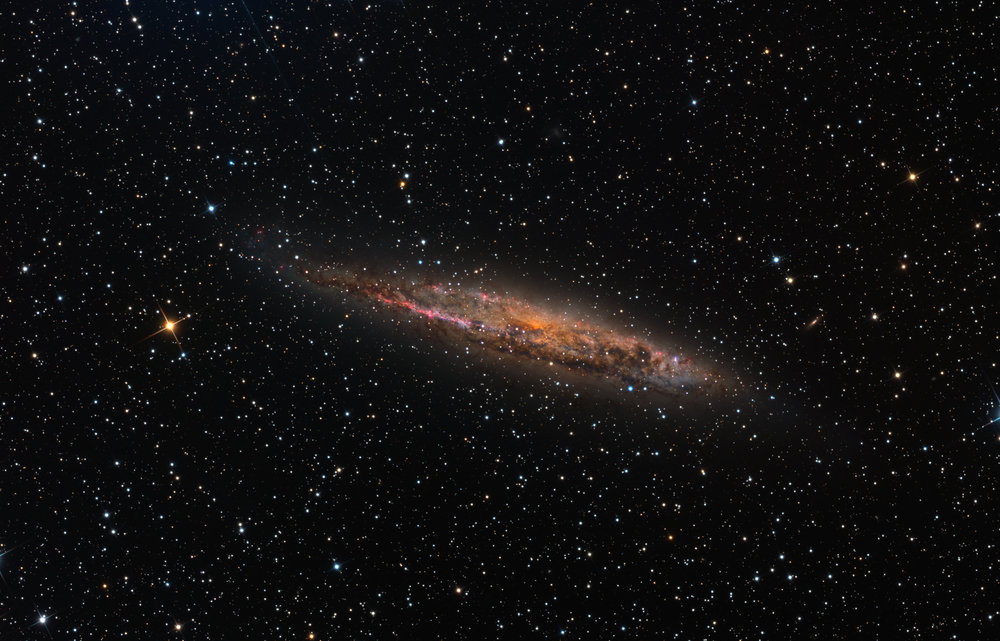 Explanation: Large spiral galaxy NGC 4945 is seen edge-on near the center of this cosmic galaxy portrait. In fact, it's almost the size of our Milky Way Galaxy. NGC 4945's own dusty disk, young blue star clusters, and pink star forming regions standout in the sharp, colorful telescopic image. About 13 million light-years distant toward the expansive southern constellation Centaurus, NGC 4945 is only about six times farther away than Andromeda, the nearest large spiral galaxy to the Milky Way. Though this galaxy's central region is largely hidden from view for optical telescopes, X-ray and infrared observations indicate significant high energy emission and star formation in the core of NGC 4945. Its obscured but active nucleus qualifies the gorgeous island universe as a Seyfert galaxy and home to a central supermassive black hole.
Explanation: Large spiral galaxy NGC 4945 is seen edge-on near the center of this cosmic galaxy portrait. In fact, it's almost the size of our Milky Way Galaxy. NGC 4945's own dusty disk, young blue star clusters, and pink star forming regions standout in the sharp, colorful telescopic image. About 13 million light-years distant toward the expansive southern constellation Centaurus, NGC 4945 is only about six times farther away than Andromeda, the nearest large spiral galaxy to the Milky Way. Though this galaxy's central region is largely hidden from view for optical telescopes, X-ray and infrared observations indicate significant high energy emission and star formation in the core of NGC 4945. Its obscured but active nucleus qualifies the gorgeous island universe as a Seyfert galaxy and home to a central supermassive black hole.21/08/2019
Science & Technologie - Santé/Médecine : Coup de soleil, danger !

Le coup de soleil est une brûlure superficielle de la peau, qui survient lorsqu'on s'est trop exposé au soleil. Les rayons UVB détériorent le microARN des cellules, ce qui entraîne une réponse inflammatoire de l'organisme. Cela se traduit par une peau chaude, rouge et douloureuse. Dans certains cas, il peut même se former une cloque remplie d'exsudat. L'inflammation disparaît normalement en quelques jours, mais il existe des moyens pour atténuer la douleur et les rougeurs.
Coup de soleil : comment l'apaiser ?
Rafraîchissez la peau en prenant une douche fraîche (entre 15 °C et 20 °C) ou un bain et en appliquant une compresse froide sur la zone douloureuse.
Buvez abondamment pour vous hydrater.
Appliquez une crème émolliente et cicatrisante type Biafine, ou un gel apaisant à l’aloe vera. Favorisez les produits contenant de la vitamine C et E, qui accélèrent la cicatrisation et minimisent la desquamation de la peau.
Ne cherchez pas à percer les cloques ou enlever la peau qui pèle.
Si les douleurs sont importantes, prenez un anti-inflammatoire type aspirine ou ibuprofène.
Couvrez la zone brûlée avec des vêtements en coton non irritants et évitez toute nouvelle exposition au soleil pendant deux à trois semaines.
Futura Sciences - France
Science & Technology - Astronomy picture of the day : The Orion You Can Almost See
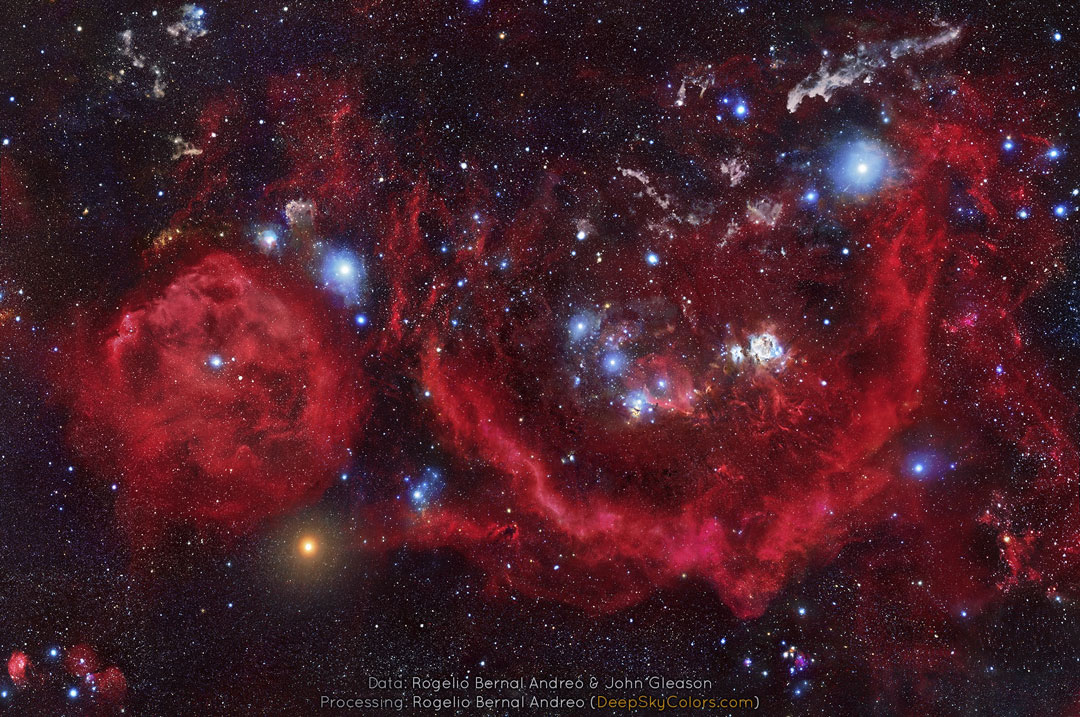
Image Credit & Copyright: John Gleason & Rogelio Bernal Andreo
Explanation: Do you recognize this constellation? Although it is one of the most recognizable star groupings on the sky, this is a more full Orion than you can see -- an Orion only revealed with long exposure digital camera imaging andpost-processing. Here the cool red giant Betelgeuse takes on a strong orange tint as the brightest star at the lower left. Orion's hot blue stars are numerous, with supergiant Rigel balancing Betelgeuse on the upper right, and Bellatrix at the upper left. Lined up in Orion's belt are three stars all about 1,500 light-years away, born from the constellation's well-studied interstellar clouds. To the right of Orion's belt is a bright but fuzzy patch that might also look familiar -- the stellar nursery known as Orion's Nebula. Finally, just barely visible to the unaided eye but quite striking here is Barnard's Loop -- a huge gaseous emission nebula surrounding Orion's Belt and Nebula discovered over 100 years ago by the pioneering Orion photographer E. E. Barnard.
20/08/2019
Science & Technology - Astronomy picture of the day : Animation: Spiral Disk around a Black Hole
Explanation: What would it look like to orbit a black hole? Many black holes are surrounded by swirling pools of gas known as accretion disks. These disks can be extremely hot, and much of the orbiting gas will eventually fall through the black hole's event horizon -- where it will never been seen again. The featured animation is an artist's rendering of the curious disk spiraling around the supermassive black hole at the center of spiral galaxy NGC 3147. Gas at the inner edge of this disk is so close to the black hole that it moves unusually fast -- at 10 percent of the speed of light. Gas this fast shows relativistic beaming, making the side of the disk heading toward us appear significantly brighter than the side moving away. The animation is based on images of NGC 3147 made recently with the Hubble Space Telescope.
19/08/2019
Science & Technology - Astronomy picture of the day : Lenticular Clouds over Mount Etna
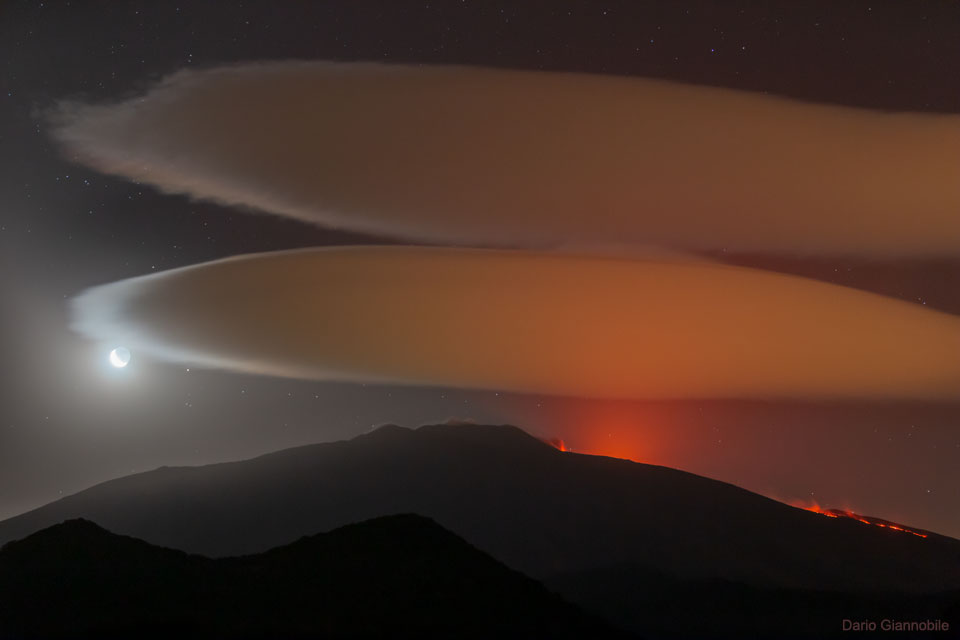
Image Credit & Copyright: Dario Giannobile
Explanation: What's happening above that volcano? Although Mount Etna is seen erupting, the clouds are not related to the eruption. They are lenticular clouds formed when moist air is forced upwards near a mountain or volcano. The surreal scene was captured by chance late last month when the astrophotographer went to Mount Etna, a UNESCO World Heritage Site in Sicily, Italy, to photograph the conjunction between the Moon and the star Aldebaran. The Moon appears in a bright crescent phase, illuminating an edge of the lower lenticular cloud. Red hot lava flows on the right. Besides some breathtaking stills, a companion time-lapse video of the scene shows the lenticular clouds forming and wavering as stars trail far in the distance.
18/08/2019
Science & Technology - Astronomy picture of the day : Human as Spaceship

Space Image Credit: NASA, ESA, Hubble, and J. Maiz- Apellániz (IAA); Acknowledgement: D. De Martin;
Human Image Copyright: Charis Tsevis; Composition: R. J. Nemiroff
Explanation: You are a spaceship soaring through the universe. So is your dog. We all carry with us trillions of microorganisms as we go through life. These multitudes of bacteria, fungi, and archaea have different DNA than you. Collectively called your microbiome, your shipmates outnumber your own cells. Your crew members form communities, help digest food, engage in battles against intruders, and sometimes commute on a liquid superhighway from one end of your body to the other. Much of what your microbiome does, however, remains unknown. You are the captain, but being nice to your crew may allow you to explore more of your local cosmos.
Inscription à :
Commentaires (Atom)
SANTé/MEDECINE - CANCER - 12 AVANCEES REVOLUTIONNAIRES - 3. Des vaccins personnalisés pour chaque patient
L’idée peut sembler futuriste, mais elle est bien réelle : des vaccins personnalisés contre le cancer sont en cours de développement au Roya...

-
2022 September 26 All the Water on Planet Earth Illustration Credit: Jack Cook, Adam Nieman, Woods Hole Oceanographic Institution ; Data ...
-
2025 May 11 The Surface of Venus from Venera 14 Image Credit: Soviet Planetary Exploration Program , Venera 14 ; Processing & Copyri...
